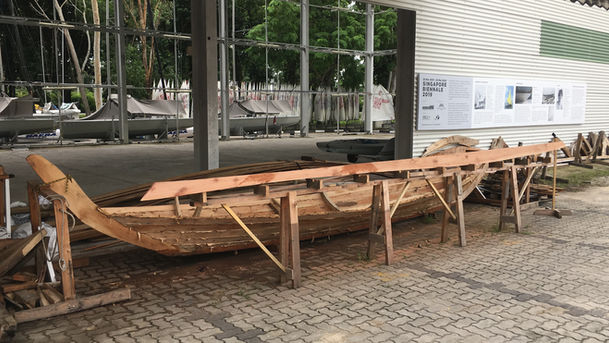top of page
Many Waters to Cross 2019
https://www.singaporeartmuseum.sg/art-events/events/dennis-tan-artist-in-progress-building-of-a-kolek
Many Waters to Cross は、2019年シンガポール・ビエンナーレのために制作・航行テストされた伝統的な kolek船を中心としたプロジェクトである。
船体は美術館への搬入の都合上、半分に切断され、その行為自体が作品の一部となった。
本作は、労働、無常性、そして「作ること」と「解体すること」のあいだにある静かな関係性を見つめている。

bottom of page







